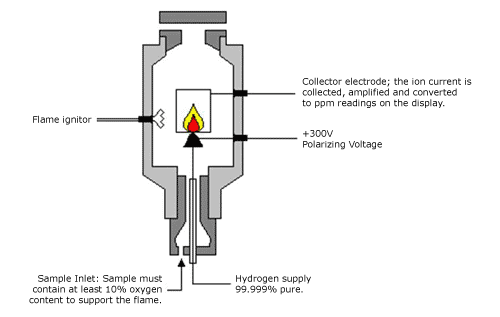Introduction to Flame Ionization
A Flame-Ionization Detector (FID) measures real-time concentrations of organic vapors in low levels from parts-per-billion (ppb) up to 50,000 parts-per-million (ppm). A FID is a very sensitive instrument used in a wide variety of applications such as:
- Hazardous waste sites
- Clean-up of spills
- Protecting workers from toxic vapors
- Refineries
- Leak detection for compliance
- Pulp and paper plants
- Hazardous materials response
- Terrorist chemical attacks
How Does an FID Work?
FIDs, like PIDs, are ionization detectors. The difference between them is the way ions are produced. In our "introduction to PIDs" section you learned that PIDs use high energy Ultra Violet light to ionize molecules. FIDs do not use ultra violet light, instead the compounds in the sample stream are burned in a hydrogen fueled-flame. The hydrogen flame can ionize any organic material with an ionization potential (IP) of 15.4 or less. Like the PID, ions formed in the sample stream are driven in one direction by a bias electrode and accumulated at a collecting electrode. The ion current is then amplified and converted to a meter readout (analog or digital, depending on the model FID) in parts-per-million.
Flame Ionization Detector (PID)

